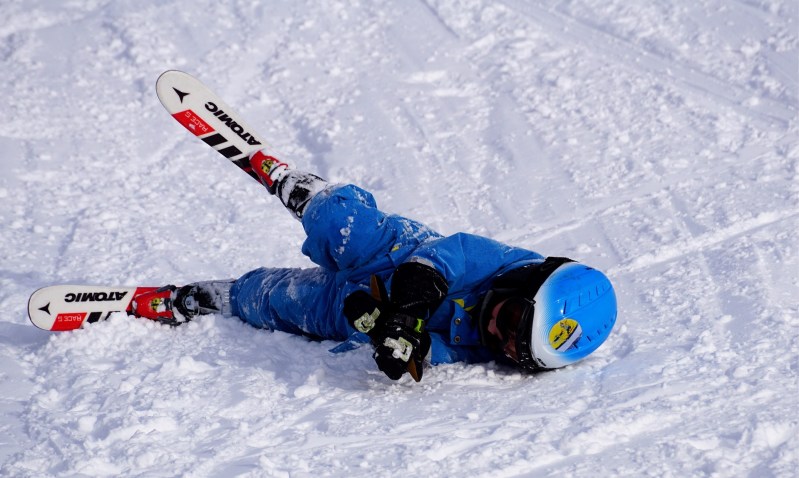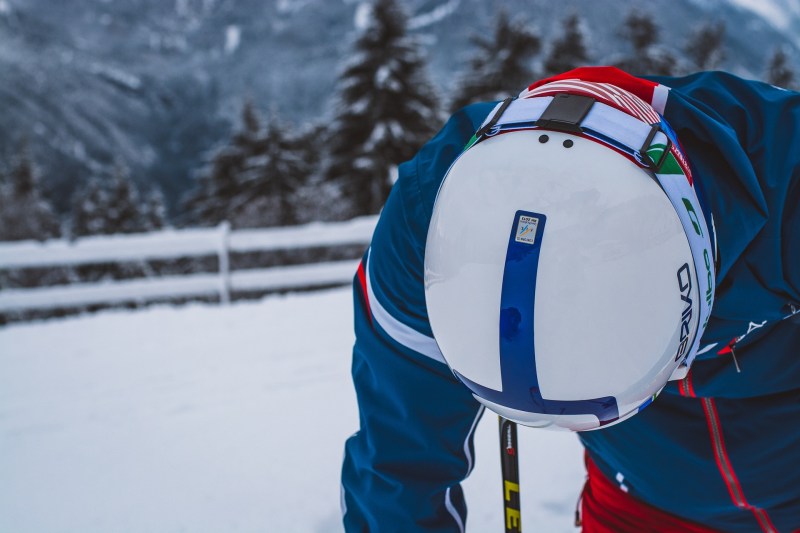
If you ski or snowboard, you should wear a helmet—end of story. I mean, the exponential improbability of the universe alone should be enough for you to consider at least getting one. The hard part, though, is where to start. This buyer’s guide will help enrich your helmet know-how, uncover the science behind these next-gen melon protectors, and ultimately help you find the helmet that fits you best.

Which type of protection is best?
Historically, helmet engineers focused mainly on protecting the skull from fracturing. And while it’s important to prevent skull fractures, researchers deemed that brain injuries are more common and can lead to more traumatic outcomes – mainly due to a thing called rotational motion.
Rotational motion can result from an angled impact to the head. The angled impact causes a sudden acceleration and deceleration of the head, causing the brain to rotate within the skull.
So, whether your helmet uses Mips, WaveCel, or Koroyd technology, they all work to prevent rotational motion.
But it’s important to understand this technology on a deeper level; moreover, what it is and how it protects you from injury.
Why Mips is a ski helmet and snowboard helmet must-have
Mips, or multi-directional Impact Protection System, functions similarly to how your brain absorbs and protects against rotational motion.
When your head encounters impact, there is room inside your skull for your brain to move, almost like an organic shock absorber.
Similarly, Mips uses several mobile, low-friction layers of energy-absorbent padding, allowing for your head to move around 10-15mm inside the helmet on impact, adding another protective layer for your brain.
Personally, I use Mips, and I’ve had my fair share of gnarly yard sales. While I can’t say whether or not Mips is the best out there, it’s definitely kept me on the slopes and has saved me from some pretty nasty injuries.
WaveCel is excellent protection
WaveCel helmets are designed to fit tightly to your head while remaining comfortable yet secure.
Behaving like a network of hundreds of interconnected shock absorbers, WaveCel technology helps distribute impact energy and reduce impact forces similarly to a car’s crumple zone, diverting any rotational motion with its stretchable, workable padding.
Koroyd is an impact game-changer
Kororyd helmets are touted for their advanced impact technology. Kororyd uses welded tubes inside the helmet, which crumple instantly on impact, absorbing traumatic forces and minimizing energy transfer to your head. This tubular material better absorbs energy through its plastic sacrificial deformation, acting as a proper energy absorber rather than a spring that crumples and wears over time.
Koroyd’s ultra-light feel and advanced breathability provide maximum comfort while maintaining A-1 safety standards.

How should a ski helmet or snowboarding helmet fit?
Aside from impact technology, your helmet’s fit is the most important part of protecting your brain from serious injury.
How to measure for a ski helmet
The first step is to measure your melon. Take a soft measuring tape and wrap it around your head, roughly an inch above your eyebrows and ears. This is the widest part of the head and where the brim of the helmet will rest. Helmet sizes are in centimeters, so make sure you record your measurement in the correct unit.
If you don’t have a tape measure, take a piece of string, wrap it around the same part of your head, and then measure the string. Easy-peezy.
Once you have your measurements, try on a wide variety of helmets in your size. Each company designs its helmet differently, and each design can lead to a better or worse fit. You will know it fits when the helmet is snug around your head, and there isn’t any excess space between the helmet and your noggin. Pay close attention to any pressure points, as that is an immediate red flag.
Okay, you have your measurements, and you chose the helmet that fits your head best. Now, it’s time for the shake test. In the words of Willow Smith, I want you to whip your hair back and forth–literally. Shake your head and take note of any movement. If the helmet shakes separately from your head, it’s too big. You will know it fits right if you use your hand to move your helmet to the left, right, up, and down, and your skin moves along with it.
But before you can walk out the door and shred the mountains with your brand-new helmet, you should double-check with a friend or helmet tech to make sure the helmet fits perfectly. Don’t undervalue the price of your safety.
Helmets come with additional parts to make them fit just right. Most helmets come with a flex wheel on the back. Turn the wheel in either direction to make micro-adjustments to your helmet’s frame. This will help you zero in on that snug fit you’re looking for.

What to wear under a ski helmet or snowboarding helmet
Now, what should you wear under that ski helmet? The reality is that most ski helmets are warm and insulated enough so that you don’t need to wear anything underneath.
If you wear something a bit thicker, you’ll sacrifice that snug fit and, ultimately, your safety.
In temperatures around ten degrees Fahrenheit, you may feel your head getting a bit chilly. Consider wearing something like a thin hat or balaclava. The thin layer should fit snuggly under your helmet without reducing any of the helmet’s protective qualities. Whatever it is you decide to wear, make sure it’s made of wool. It’ll store heat better and dry quicker than cotton or other similar materials.

Are ski helmets and snowboarding helmets different?
There are no technical differences between a snowboard and a ski helmet. They are both designed to do the same thing, which is to protect your brain.
The only difference is how they market their product. If you walk into a ski shop and say you’re a snowboarder, the techs will refer to most of the universal equipment as “snowboard equipment.”
But rest assured, skiers’ and snowboarders’ safety are treated equally.

Which are the best ski helmet and snowboarding helmet brands?
SMITH, POC, Anon, GIRO, and Solomon are all renowned for their consistent safety ratings and are used by most of the top skiers and snowboarders worldwide.
It doesn’t hurt either that these companies have been around the longest and have been able to use years of industry and research experience to provide the best product possible.
SMITH
Smith offers helmets for virtually any skier or rider. Utilizing Koroyd and Mips tech, Smith recommends pairing your Smith helmet and goggles for maximum comfort, ventilation, and fog-free vision.
POC
POC lets you choose from either freeride or racing helmets, utilizing Mips technology.
Anon
From the folks at Burton Snowboards, Anon has a wide variety of tech and features for their helmets. Pick from WaveCel or Mips technology, as well as fleece-lined, audio-compatible, and standard EPS ad-ons.
GIRO
Giro provides sleek freestyle, all-mountain, and race helmets, utilizing Mips and Spherical safety technology.
Solomon
Solomon offers a wide variety of freeride, touring, and on-piste ski helmets, primarily sticking to Mips technology.

How long do ski helmets last?
The question surrounding helmet longevity is a tough one to answer. It all comes down to wear and tear, and that can vary from person to person.
When to replace a ski helmet
If you’ve slammed your head on some not-so-soft powder, but it wasn’t hard enough to cause any serious injury, it’s safe to say you can keep using the same helmet. Most people can recall those pretty gnarly slams, so once those slams start to pile up, it’s a pretty good indication that you should swap out noggin protectors.
Now, if your helmet is ever visibly fractured or involved in a serious impact, you should, one hundred percent, purchase a new helmet. You can’t put a price on your health. Better to be safe than sorry.
How often to replace a ski helmet
A good rule of thumb is that if you use your helmet regularly throughout the season, you should think about purchasing a new one every five years or so.

To wrap…
At the end of the day, helmets are collectively designed to protect your brain. The only difference is the technology they use to do it. So, pick the helmet with the technology that feels right to you, be stubborn about the fitting process, and keep a log of how many slams your helmet has amassed. If you do all of this, you will be safe and protected out on the slopes.
Editors' Recommendations
- These 3 brands of ski or snowboard wax are the only ones we recommend: Here’s why
- Video: Skier nearly collides with black bear at Heavenly Ski Resort in Lake Tahoe
- The ultimate ski gift guide for anyone who loves powder days
- Snowboarding gear gift guide: SMITH, Burton, 686, Dakine, and more
- Ski trail ratings, explained (and why most ratings are actually BS)




